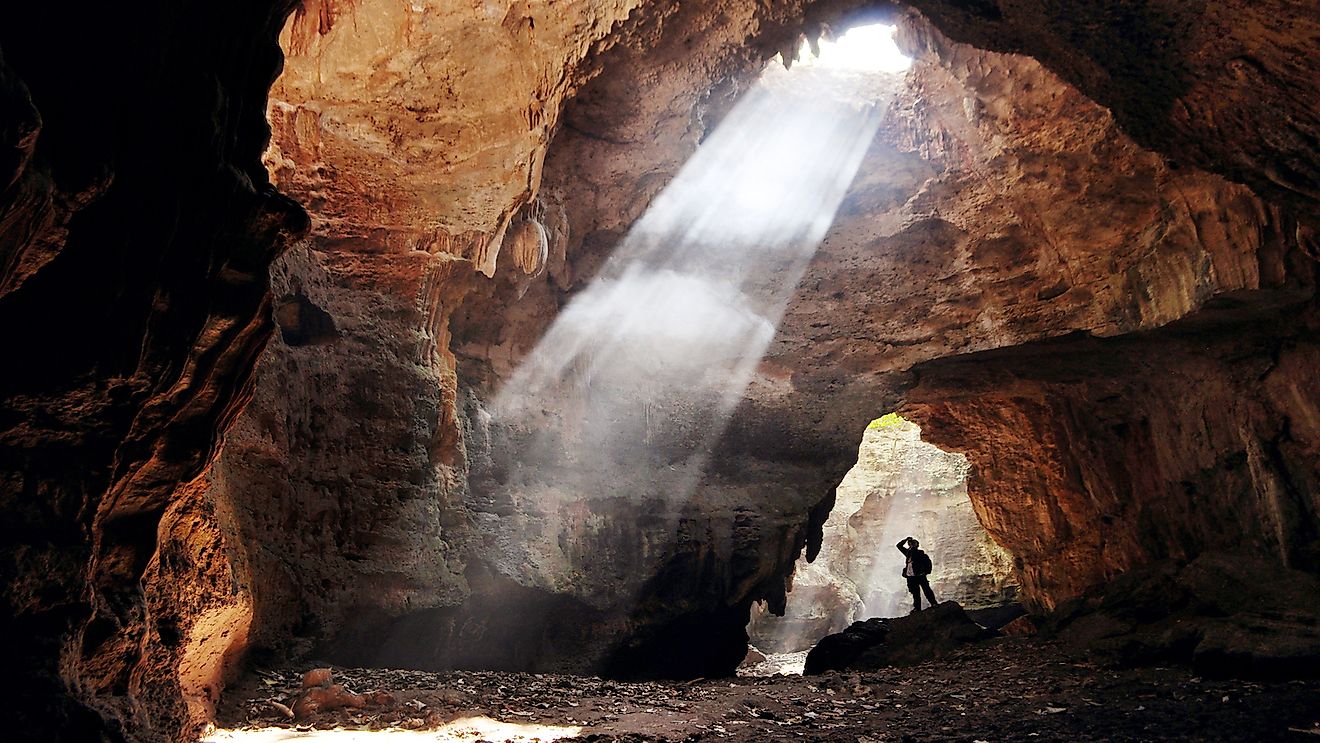Why Is Protecting Caves Important?

A cave refers to a natural void found in the underground. Caves are typically a large space which is enough for a human to enter, and they are formed as a result of weathering of rocks extending deep into the ground. Speleology is the science of studying and exploring caves and karst features to understand their structure, composition, life forms, history, physical properties, and the process through which they formed. Most of the caves are formed as a result of soluble rocks such as limestone being dissolved by slightly acidic water. Caves are also formed through volcanic processes, and they are known as lava tubes. Some caves have passages that extend several miles while others are significantly shorter. Some caves are muddy and damp while others are dusty and dry. Typically, the temperature in most of the caves is the long-term average of the surface temperature above the cave. Karst and caves which are found near the equator are relatively warmer compared to caves further away from the equator. Similarly, caves found in the lowlands are relatively warmer than those found in the mountains.
Life Forms In Caves
Caves have a very fragile ecosystem compared to other ecosystems outside the caves. For instance, the cave-dwelling animals, also known as the troglobites, cannot survive outside of the cave and they are not even able to migrate to a different cave. Troglophiles are animals that can spend all their lives in the cave, but they are also found in other environments or ecosystems. On the other hand, trogloxenes are the species that inhabit the cave, but they cannot accomplish their life circle completely within the cave environment. There are also the accidentals which do not fall into any of the three categories. All these types of animals live in an intricate web of interrelationship, which is so fragile that a minor disturbance could jeopardize the whole ecosystem. The troglobites exhibit certain unique characteristics that are associated with habitation of a subterranean life such as loss of sight or loss of pigmentation. This causes their bodies to be white or pale. They usually have elongated appendages and their other senses are greatly advanced. These morphological changes have evolved to adapt the animals to the cave environments, which are typically dark all the time. These animals are not able to survive in any other environment or even other caves, and they are endemic to their habitats.
Significance Of Protecting The Caves
Caves are some of the most fragile ecosystems in the world, and they serve as the unique, irreparable and irreplaceable habitat of the cave-dwelling species. Caves are also an important reservoir of water. For instance, in karst landscapes, the runoff water flows into the cave systems where it often flows as underground rivers to finally emerge on the surface as springs. For thousands of years, caves have served as homes, religious sites, and even burial grounds of different communities. Caves have almost constant humidity and temperature unlike other environments, and therefore they can preserve some of the most sensitive cultural and archaeological specimens for several millennia. Some of the caves have existed for thousands of years. Modern threats that pose the greatest risk to such cave ecosystems are the developmental pressure on land, and other human activities such as quarrying, pollution, and even vandalism. Both the underground and surface caves are threatened by such activities.
Cave Conservation
Cave conservation refers to the restoration and protection of caves to minimize and prevent the adverse effects of human activities on the fragile cave ecosystem. Most caves have highly delicate features that could be disturbed leading to significant alteration of the cave ecosystem. For instance, a slight change in the levels of light, temperature, humidity, or airflow could have far-reaching consequences. More often, the water that flows has dissolved minerals that seep through the rocks creating features in the caves known as speleothems, which could be formed on the walls, ceilings, or the floor. These speleothems include formation such as helictites, stalagmites, stalactites, rimstone, flowstone, pearls, and columns. The structures typically grow slowly and could take several thousands of years. These cave features are very sensitive and could stop growing as a result of touching or change brought by human activities. Therefore these caves require protection because a simple movement could destroy or stop what had taken thousands of years to grow. Most of these speleothems cannot regenerate after they are destroyed.
Caving is a popular activity of exploring caves and karst systems, and people who engage in such activities are required to be sensitized to the potential damage they can cause to the caves. Visitor traffic, pollution, change in humidity, and temperature patterns are known to have an adverse impact on the fragile cave ecosystems. It has been found that increasing the level of carbon dioxide results in a higher equilibrium concentration of calcium in the drip that is feeding the speleothems and therefore can dissolve the existing features. In 2008, the study found that respiration by cave visitors generates increased carbon dioxide concentrations that can lead to an increase in temperature inside the cave, and this could have disastrous consequences to the cave ecosystem.
National Speleological Society
The National Speleological Society is an organization in the United States that was established in 1941 to advance the conservation, exploration, studying, and understanding of caves in the US. The organization initially had its headquarters in Washington DC, but currently, its offices are in Huntsville, Alabama. The society is responsible for carrying out scientific study and research on protection, exploration, and restoration of caves. The organization has more than 10,000 members. There are other state organizations that work towards conserving the caves in their respective States. Other countries around the world also have different organizations and laws which have been put in place to preserve and conserve the cave ecosystems.











